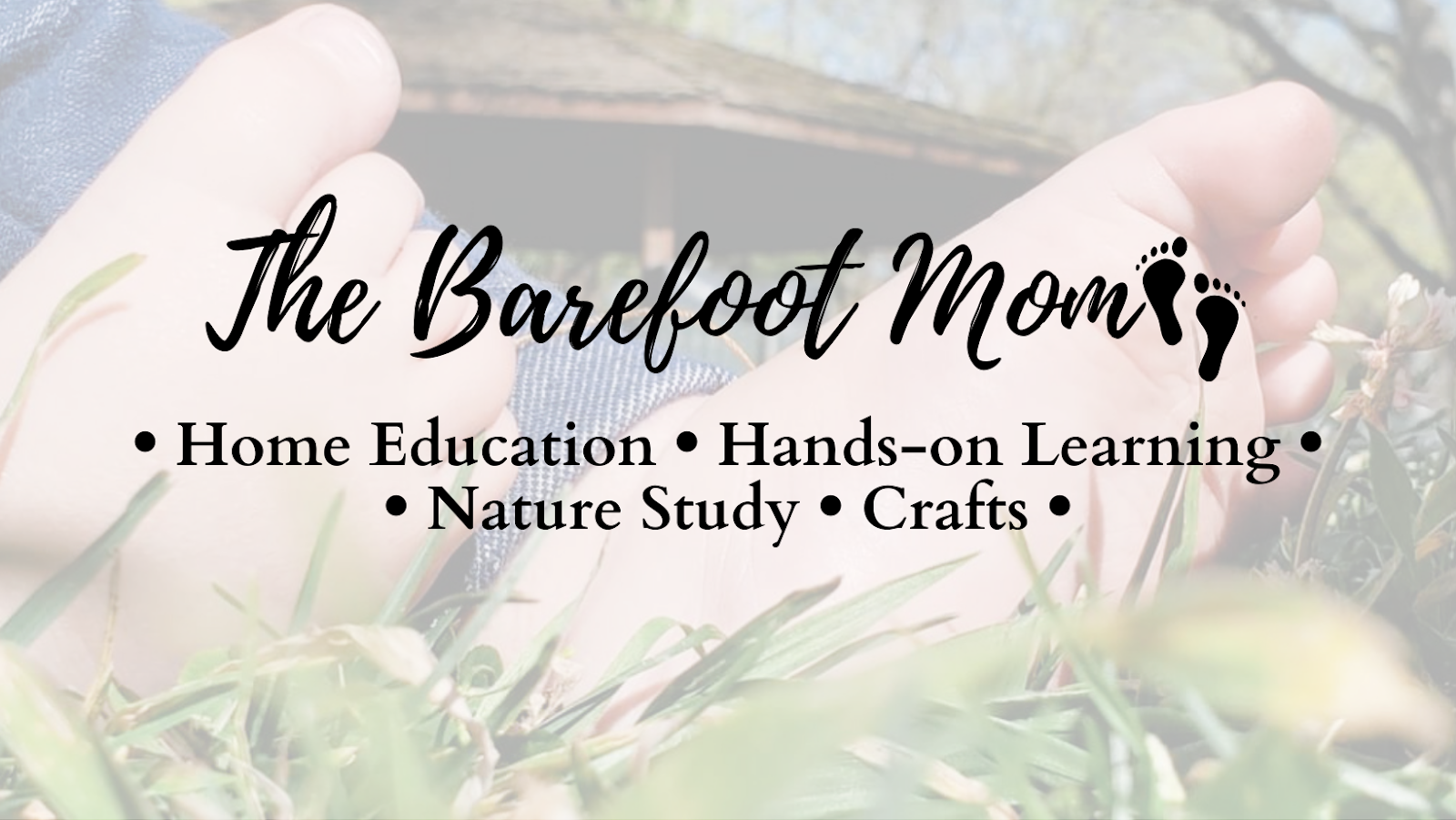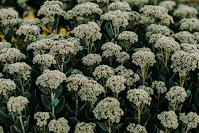"What is a weed? A plant whose virtues have not yet been discovered." I love this Ralph Waldo Emerson quote. Many of the plants that are considered common backyard weeds actually have wonderful nutritional and medicinal benefits. In this post I share 8 of my favorite backyard "weeds" and how I use them.
Dandelion- Dandelions are another favorite of mine. Not only do they have pretty yellow flowers that serve as an early spring food source for pollinators, but they actually have nutritional value and medicinal qualities.
Every part of the dandelion plant is edible, and they're high in vitamins A, B, C, and D, and minerals like zinc, potassium, and iron. The leaves and blossoms can be used in salads, and roots can be used in teas and tinctures. Dandelions can be used medically as a diuretic and an appetite stimulant.
Yarrow- Yarrow is an awesome little herb you can find growing in wooded areas. It's fever reducing and styptic qualities make it a fantastic addition to your first aid kit. Yarrow is an effective wound healer, as it promotes coagulation and has antimicrobial properties that can help fight infection. To use as a fever reducer, just brew it into a tea and drink it, or add it to a tepid bath or cool compress.
It also promotes healthy circulation and proper bile secretion from the gall bladder.
Mullein- Mullein grows in fields and open spaces all over North America, Europe, and Asia. It's useful for all sorts of respiratory issues as it helps remove mucus from the lungs. It's most commonly used dried and brewed as tea. Mullein can also be used to soothe and reduce the pain of ear infections if infused into oil and either rubbed around the ears or dropped into the ear canal.
Foraging Basics
Before I get any further I want to mention a couple of safety tips:
Only pick wild herbs from places you know haven't been treated with toxic pesticides.
Always rinse your herbs before consuming them or using them in any product you plan to use on your body.
Do not consume or use any wild growing plant unless you are certain of what it is and that it is safe.
Nothing in this post is meant to be taken as medical advice. Always be sure to do your own thorough research before using any remedy.
Plantain- One of my very favorite backyard herbs, that is often called a weed, is plantain. There are several different varieties, and they grow just about everywhere. I rarely have trouble finding some when I need it.
Plantain leaves are high in vitamin C, vitamin A, and calcium. They can be used as greens in just about any salad.
In addition to having high nutritional value, plantain also has anti-inflammatory, antibacterial, and antimicrobial properties. It's a great remedy for itchy bug bites and rashes, it soothes bee stings, and can be used to aid the healing of bumps, bruises, and minor scratches. It's a key ingredient in my homemade all purpose herbal salve.
Plantain leaves are high in vitamin C, vitamin A, and calcium. They can be used as greens in just about any salad.
In addition to having high nutritional value, plantain also has anti-inflammatory, antibacterial, and antimicrobial properties. It's a great remedy for itchy bug bites and rashes, it soothes bee stings, and can be used to aid the healing of bumps, bruises, and minor scratches. It's a key ingredient in my homemade all purpose herbal salve.
For more information about this awesome little herb and tips for identifying it, checkout this post from Gwen's Nest.
Dandelion- Dandelions are another favorite of mine. Not only do they have pretty yellow flowers that serve as an early spring food source for pollinators, but they actually have nutritional value and medicinal qualities.
Every part of the dandelion plant is edible, and they're high in vitamins A, B, C, and D, and minerals like zinc, potassium, and iron. The leaves and blossoms can be used in salads, and roots can be used in teas and tinctures. Dandelions can be used medically as a diuretic and an appetite stimulant.
My family's favorite way to eat dandelion blossoms are battered and fried. Mix a cup of milk, an egg, a cup of flower, and a pinch of salt and pepper. Dip your blossoms and then fry them in a deep fryer or on the stove.
Yarrow- Yarrow is an awesome little herb you can find growing in wooded areas. It's fever reducing and styptic qualities make it a fantastic addition to your first aid kit. Yarrow is an effective wound healer, as it promotes coagulation and has antimicrobial properties that can help fight infection. To use as a fever reducer, just brew it into a tea and drink it, or add it to a tepid bath or cool compress.
It also promotes healthy circulation and proper bile secretion from the gall bladder.
Mullein- Mullein grows in fields and open spaces all over North America, Europe, and Asia. It's useful for all sorts of respiratory issues as it helps remove mucus from the lungs. It's most commonly used dried and brewed as tea. Mullein can also be used to soothe and reduce the pain of ear infections if infused into oil and either rubbed around the ears or dropped into the ear canal.
Due to a potentially toxic chemical constiuent found in raw mullein, it should always be thoroughly heated before ingestion.
For more information about mullein and how to identify it, check out this post from Oak Hill Homestead .
Stinging Nettle- If you've ever accidentally come into contact with stinging nettle, you might be thinking "how could it possibly be consumed or used medicinally?" The fresh leaves are extremely irritating to the skin, but stinging nettle has been both consumed for it's nutritional benefits and used as an herbal medicine since ancient times. Once the leaves are dried or cooked, it is not only safe to consume, but also extremely nutritious.
Stinging Nettle- If you've ever accidentally come into contact with stinging nettle, you might be thinking "how could it possibly be consumed or used medicinally?" The fresh leaves are extremely irritating to the skin, but stinging nettle has been both consumed for it's nutritional benefits and used as an herbal medicine since ancient times. Once the leaves are dried or cooked, it is not only safe to consume, but also extremely nutritious.
Stinging nettle is high in vitamins A, C, and K, and is a good source of fiber. It also contains a small amount of protein and calcium.
Stinging nettle has anti inflammatory properties and can be used to treat arthritis and other joint issues. It is also sometimes used to treat hay fever, high blood pressure, and can help maintain healthy blood sugar levels.
Purslane- Purslane is an annual succulent that can be found growing just about anywhere, as it thrives in poor soil. We often find it growing in cracks in sidewalks, alongside parking lots, and in empty lots.
Purslane is extremely nutritional and is often considered a "superfood". It can be eaten raw or cooked and is high in vitamin A, vitamin C, manganese, magnesium, potassium, and omega-3 fatty acids.
The sticky juicy leaves can be used to soothe burns, stings, and other skin irritations.
For pictures and tips for identifying purslane and avoiding spurge, it's toxic look alike, check out this post from Foraged Foodie.
Lemon balm- Lemon balm is one of my personal favorites, not only does it smell and taste amazing, but it also has amazing health benefits. Lemon balm is a lemon scented herb in the mint family. We often use fresh or dry leaves to season chicken and fish, and in tea to give it a fresh lemony flavor.
Lemon balm- Lemon balm is one of my personal favorites, not only does it smell and taste amazing, but it also has amazing health benefits. Lemon balm is a lemon scented herb in the mint family. We often use fresh or dry leaves to season chicken and fish, and in tea to give it a fresh lemony flavor.
Medicinally it is used to reduce stress and to improve mood and cognitive function. I often add it to my bedtime tea to help me relax.
Lemon balm's antiviral properties make it an effective treatment for cold sores. Just crush up a leaf between your finger tips to release the juices and apply it to the sore several times a day.
Lemon balm is also great for treating indigestion and nausea. Just the scent alone tends to settle my stomach, but it can also be brewed into tea and consumed.
Chicory- I love chicory for it's beautiful blue flowers, but it's roots are where it's nutritional and medical values lie. The roots can be minced, roasted, and brewed as a coffee replacement. Additionally, the inulin in chicory root fiber feeds our gut bacteria, aiding in digestion and promoting good gut health.
Chicory root also contains small amounts of manganese, potassium, vitamin B6, vitamin C, phosphorus, and folate.
For more information about identifying chicory and how to brew chicory coffee, check out this post from The Little Black Coffee Cup.
If you enjoyed this post, check out:
Follow me on:







Comments
Post a Comment